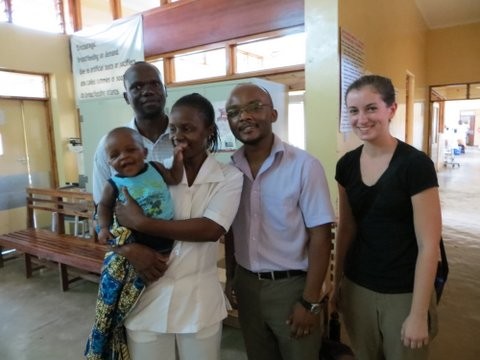
In 2007, professors Rebecca Richards-Kortum and Maria Oden from Rice University visited Malawi to witness newborn health care and identify opportunities for the greatest impact through innovation. The group met with then Chair of Pediatrics at the University of Malawi College of Medicine Liz Molyneux. The team assessed unmet clinical needs and decided to design a device to treat preterm babies suffering from respiratory distress syndrome - a leading cause of global child mortality.
The idea was sparked from a homemade bubble Continuous Positive Airway Pressure (CPAP) device that Liz had previously built. CPAP is an effective form of oxygen therapy that helps babies who are unable to breathe on their own. However, this technology is costly and often too expensive for hospitals in developing countries. Liz’s earlier CPAP used a modified vacuum pump to generate airflow, however, the device would overheat and therefore was unsustainable. How could they build a rugged and affordable version of this lifesaving device? The team immediately returned to Houston to get to work on a design.
With supervision from Rice faculty and pediatricians at Texas Children's Hospital and the University of Malawi, the right team of students came together in 2009 to build an affordable and rugged CPAP machine. They went to a pet store and bought aquarium pumps that they thought would give proper air flow. For just $150, the students built a homemade CPAP that provided the same pressure and flow as the CPAPs used in Houston hospitals. Rice senior Jocelyn Brown traveled to Malawi after her graduation to demonstrate the device for the nurses in the neonatal ward. Shortly after her trip, the Saving Lives at Birth program was introduced for the first time and they applied for a grant. Rebecca recalls vividly the announcement of the winners during the DevelopmentX event, “Jocelyn and I were both so stressed, and we debated over who would have to tell the nurses back in Malawi if we were not picked.” Rice was the very last name to be announced as a winner - two years in a row. The grant allowed Jocelyn to return to Malawi for a CPAP clinical trial that led to an increase in survival from newborns with respiratory distress syndrome from 25 to 65 percent.
The Rice team won a Saving Lives at Birth grant the following year allowing them to scale up their innovation and work closely with nurses and doctors in Malawi to improve the CPAP. Rebecca says the partnership with USAID has been instrumental in expanding their reach and connecting them with other partners interested in newborn care.
The interactions with patients in Malawi have also been a driving force. While in the Machinga District Hospital installing CPAPs and offering trainings, a nurse approached Jocelyn and said that her baby had been born preterm and had survived thanks to the CPAP. The nurse brought her healthy son, Chisomo, to the hospital to meet Jocelyn. Jocelyn is now a Project Manager at a US for-profit company, 3rd Stone Design, and has continued her work in improving health around the world.
Since the start of their program, the Rice team has witnessed a growing recognition of the need to strengthen newborn care across countries and the CPAP device is now being used in 30 countries. Rebecca believes the biggest outcome has been the ongoing commitment from USAID, ministries of health, and individual facilities to scale up this life saving innovation. The CPAP has been used to treat 3,272 babies in Malawi and 1,346 nurses and clinicians have received CPAP training and mentorship to date.
Rice is currently a semifinalist in the MacArthur Foundation’s 100&Change competition to win a $100 million grant to fund a proposal that promises real and measurable progress in solving a critical problem of our time. This additional funding would allow them to not only further their progress in Malawi by deploying a package of technologies to support comprehensive newborn care, but to scale up the CPAP and this package in other countries where the innovation has been introduced.







Comment
Make a general inquiry or suggest an improvement.